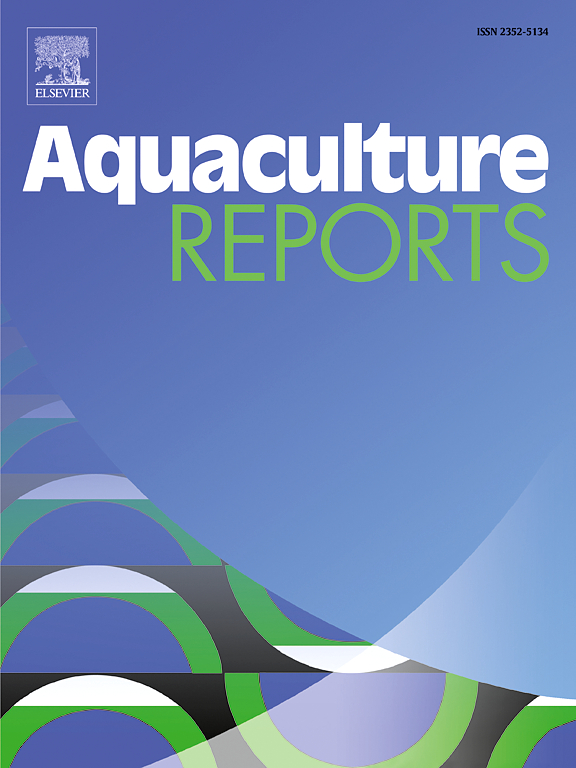Effects of kelp phlorotannins on the growth, immunity, intestinal health and disease resistance against Vibrio splendidus of sea cucumber Apostichopus japonicus
IF 3.2
2区 农林科学
Q1 FISHERIES
引用次数: 0
Abstract
The sustainability of sea cucumber Apostichopus japonicus industry requires the development of ecofriendly agents to control the disease. Phlorotannins are natural polyphenols from brown seaweed and their health-promoting functions have been identified in mammals. Although the sources of phlorotannins are widely distributed and inexpensive, they were rarely investigated in aquatic animals. In the present work, phlorotannins were extracted from kelp and added to the feed of sea cucumbers at the concentration of 0 (control), 0.4, 0.8 and 1.6 g kg⁻¹ . The sea cucumbers with the initial weight of 15.7 ± 0.2 g were fed with diets for eight weeks and were injection-challenged with Vibrio splendidus. Phlorotannins at any assayed dietary concentration significantly increased the growth performance (P < 0.05) and decreased the seven-day cumulative mortality after challenge. The sea cucumbers fed on 1.6 g kg−1 of phlorotannins showed the highest weight gain rate, which was about 47 % higher than control group. And 0.8 g kg−1 of phlorotannins induced the lowest post-challenge motility, which was about 43 % lower than control group. On one hand, dietary phlorotannins significantly increased total coelomocytes counts, phagocytosis, superoxide anion production (P < 0.05). On the other hand, the total antioxidant capacity and the activities of superoxide dismutase, catalase, glutathione peroxidase in coelomocytes lysis were significantly raised by phlorotannins while the malondialdehyde level was significantly reduced (P < 0.05). The intestinal health of sea cucumbers was also enhanced by phlorotannins, as expressed by the higher intestine fold height, up-regulation of tight junction genes (ZO-1 and occludin) and down-regulation of two proinflammatory genes (interleukin 17 and transforming growth factor - beta). In conclusion, the present work reported the promoting effects of phlorotannins on growth and disease resistance of sea cucumbers, which could be attributed to the abilities to improve the immunity, redox homeostasis and intestinal healthy condition. Based on the growth and survival after challenge, the optimal dietary concentration of phlorotannins was 0.8 g kg−1 for sea cucumber.
求助全文
约1分钟内获得全文
求助全文
来源期刊

Aquaculture Reports
Agricultural and Biological Sciences-Animal Science and Zoology
CiteScore
5.90
自引率
8.10%
发文量
469
审稿时长
77 days
期刊介绍:
Aquaculture Reports will publish original research papers and reviews documenting outstanding science with a regional context and focus, answering the need for high quality information on novel species, systems and regions in emerging areas of aquaculture research and development, such as integrated multi-trophic aquaculture, urban aquaculture, ornamental, unfed aquaculture, offshore aquaculture and others. Papers having industry research as priority and encompassing product development research or current industry practice are encouraged.
 求助内容:
求助内容: 应助结果提醒方式:
应助结果提醒方式:


